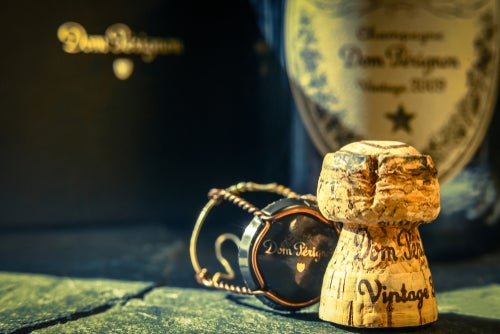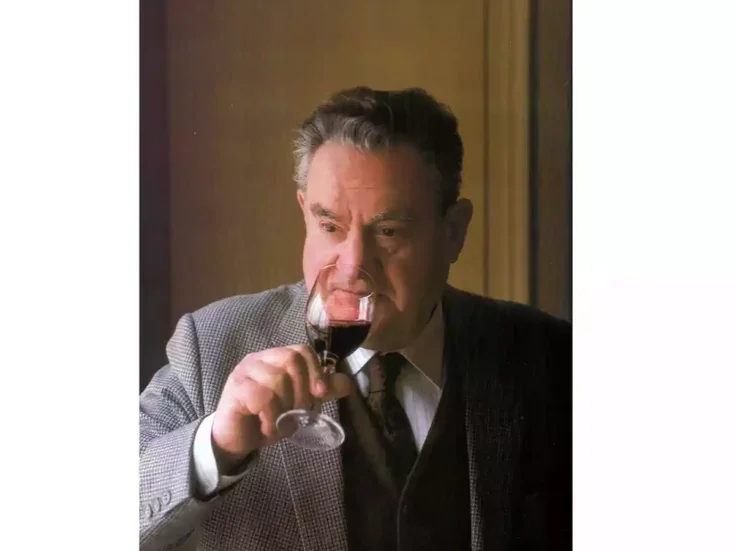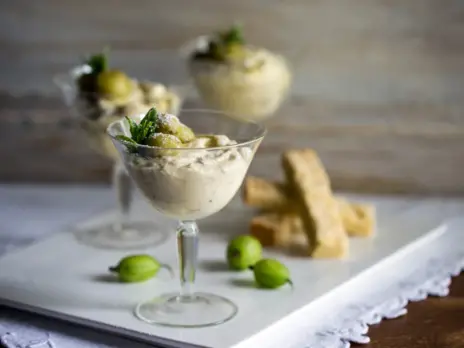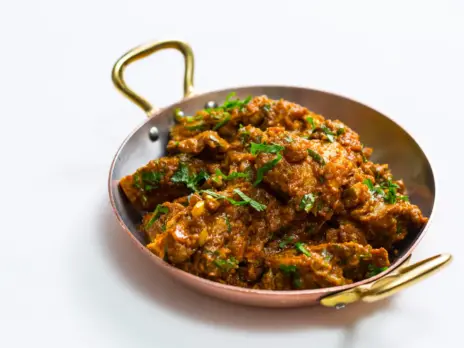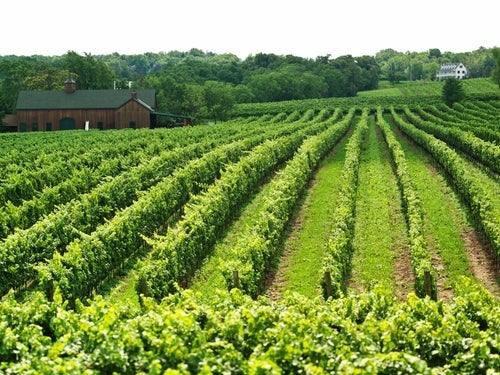
After an extensive series of visits and vertical tastings, Sarah Marsh MW believes the best Ontario Chardonnay is close to meeting one of the key criteria for any definition of fine wine.
How long can you age Chardonnay,” asked a woman in the audience at the 2024 International Cool Climate Chardonnay Celebration (I4C+) in Niagara, Ontario. The panel, largely made up of producers making top-end Ontario Chardonnay, was non-committal. No one suggested that some bottle age might be beneficial.
It’s my belief that for a region to compete in the global arena of fine wine, their best wine should have the potential to evolve gracefully over a minimum of a decade while gaining in complexity as youthful fruitiness subsides and terroir comes to the fore. In great vintages this could and should be longer, 15 years or more for Chardonnay. Whether the consumer decides to age them is irrelevant.
I spent a week following the I4C+ visiting producers on the Niagara Peninsular and in Prince Edward County to taste verticals of their top Chardonnay. It soon became clear that few producers had ever done this before and many were surprised how well some of their best bottles of Chardonnay were holding up.
At Flat Rock Cellars Ed Madronich is probably the only person who routinely pulls out specific mature wines – notably Rusty Shed 2009 and 2013—confident in their preservation under screwcap, vintages which seem barely changed since I tasted them on a previous visit two years ago. “My goal was always to make elegant, balanced and age-worthy wines. Now I can showcase these vintages, I can say the vineyard has lived up to its potential,” remarks Ed.
Later at Hidden Bench Estate the cooler 2013 and 2015 vintages stood out among a vertical of Felseck Vineyard as did 2015 Twenty Mile Bench Chardonnay at Tawse Winery from a long vertical of Robyn’s Vineyard.
However it became apparent that, while my tastings were dotted with some notable wines, there was no consistency across any one producer or vintage before 2019 which seems to be a watershed vintage for Ontario.
The 2019 produced Chardonnay with all the elements to age with élan. Admittedly 2019 was an excellent, cooler, and relatively untroubled season, but I feel it was the moment at which improvements made in the vineyards and wineries came together during a great season, yes maybe in the best ever vintage, to provide the structure for greater aging potential to showcase the world class quality of Ontario Chardonnay.
For it’s clear that over the past 25 years the Niagara Peninsular (fewer years in PEC) has produced Chardonnay with the acidity and pH to last, but as Adam Lowry from Cloudsley Cellars remarks, “the challenge was to have the density of fruit to play off it.” I asked each producer about changes they had made over the span of vintages tasted—often back to 2013 or 2009—and formed an impression of significant progress in the vineyards from the mid 2010s, which has produced more intense and balanced fruit over the past five years or so. Around the same time winemaking evolved from a focus on “premium” Chardonnay to more of a low-intervention approach designed to showcase terroir.
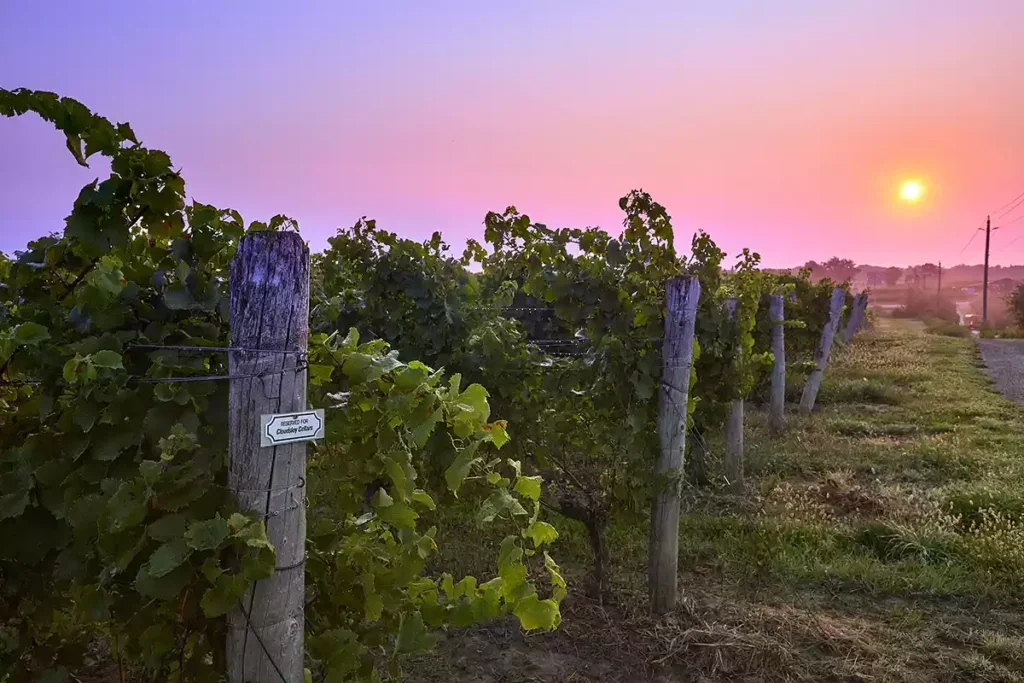
The before and after of Ontario Chardonnay
That’s a sweeping statement which requires substantiating with examples. Naturally we should start in the vineyard. Let’s take leaf plucking. Many 2016s have a burnt, harsh phenolic taste. Some, under screw cap or Diam, are likeable as fully mature wine, but always more evolved than the vintages that preceded them, and many are past it. The 2016 season was hot and dry and it seems that producers made the mistake of stripping leaves around the fruit zone.
However, 2020 was also hot and dry, albeit not quite as dry as 2016, but with better vineyard management than in 2016 the wines are concentrated yet fresh. In fact this is an excellent, opulent vintage, which is well balanced and the best examples should evolve over a period of 15 years. As Carolyn Hurst at Westcott Vineyards remarks, “viticulture was done by rote or the way it was done in New Zealand or Australia, but a new wave of viticulturists have changed things. Independent thinking about how we manage our viticulture is an important part of the growth of our industry.”
I heard a lot, particularly from these young viticulturists, about the improvements they have made to the quality of the soil, conscious that a healthy soil provides for a happy vine and better fruit. At Tawse Winery, Augusta Vanmuyen— among the talented cohort of graduates from Niagara College’s Winery and Viticulture Programme—has made changes to the 4-acre (1.6ha) Robyn’s Block from which Tawse’s top Chardonnay comes, a vineyard that was suffering when she arrived. Breaking up the compact soil and feeding it with chicken manure has provided more nitrogen, more micro-organisms, and a looser, more permeable soil is reflected in a healthier canopy and riper grapes.
For those producers, which include some of the best, who purchase fruit from professional grape growers, any improvement can only be made by working closely with their growers and a willingness to pay extra for vineyard procedures, particularly dropping fruit, hand harvesting, and maintaining an airy canopy. This costs well in excess of the price per kilo set by the Grape Growers of Ontario. As powdery mildew is the most pressing concern on the Peninsular, it is understandable that some systemic sprays are used. Herbicides are a different matter, but many growers offer mechanical weed control.
The demand for premium fruit has coincided with growing enthusiasm from the grape growers, Craig Wismer among them, to move from producing maximum yields, to a lower crop of quality grapes to reflect the potential of their vineyards. This symbiotic relationship is certainly contributing to the uplift in quality of more recent vintages of Ontario Chardonnay.
I heard good things about former sommelier Paul Franciosa who owns Grimsby Hillside vineyard. This had been poorly managed, but after Franciosa was approached by a number of micro-négociants in search of premium fruit, he engaged a dedicated vineyard manager, Josh Mitchell, in 2019 and converted to organic management in 2022. This 80-acre (32ha) grower’s vineyard is en route to becoming certified. Not bad in Ontario where few estates are certified as organic. (Hidden Bench and Tawse Winery are notable exceptions.) Grimsby Hillside’s frontier block is planted with 30-year-old low-yielding Chardonnay vines, which produce some of the best fruit from Niagara Peninsular. This is made into ageworthy Chardonnay by Ilya Senchuk at Leaning Post Wines and Thomas Bachelder.
I should also mention harvest dates which have been fine tuned. Chardonnay clones 95 and 96, the most widely planted clones during the past 30 years, can turn from underripe to over-mature in a day in a warm site. There has been a shift to earlier picking with an eye to acidity rather than sugar. These days everyone is aware, producers and fine wine lovers alike, that low pH is a useful component for aging wine.
More recent planting over the past 15 years is likely to include clone 548 and the Chablis clone 76. As these vines mature the wines they produce should become more profound and ageworthy, but there is plenty of evidence that even young clone 76 can show great promise. A shining example is the elegant Mason Vineyard L’Avenir Chardonnay 2022 from 1ha (2.4 acres) of vines hand-planted by Kelly Mason in 2017 and 2018 on Twenty Mile Bench.
And of course the Chardonnay we are interested in is harvested by hand and goes across a selection table, something particularly important in challenging vintages, which brings us to 2021. To listen to the producers’ tales of trial and tribulation during the season, you’d think there was little chance of making good wine, but I tasted many a bottle of 2021 over my ten days in Ontario and was impressed by the style, quality, and consistency. It is a classic Niagara cool-climate vintage. Like any vintage with fruit which isn’t naturally clean, the capacity for it to age in the long term without deviation is uncertain, but I can’t recall anything which disappointed me, and feel confident it will develop beneficially over the medium term. Clearly people stayed on top of the mildew and meticulously selected the good fruit. To substantiate 2019 as a watershed vintage, there had to be at least one difficult, but well-handled vintage in the subsequent years. This is 2021.
Of course, 2019 is not a hard and fixed date. 2017 is a good Ontario Chardonnay vintage and some examples are lovely with an aging potential of ten-plus years (so good for another three or four years), while as many lacked intensity and are peaking now. There are examples of 2015 which have plateaued in a good place and there’s no rush to drink them. My point is that, collectively, the trade seemed to reach a high point in 2019 when the vineyards lived up to their potential and created a level of confidence which is carrying the producers forward whatever the gods throw at them—and the gods were kind in 2023. This appears, from barrel tasting, to be very promising for Chardonnay, a nicely balanced vintage with good intensity, a little richer than 2019.
Moving beyond the technical
In the winery there has been a move away from technical winemaking over recent vintages to a thoughtful approach more expressive of terroir and conductive to aging. Those I visited are now using little or no S02 at the press, conscious that oxidizing the unstable phenolics in the juice at this early stage is critical for the stability of the wine later on. Most use a cloudy juice taking all the nice fluffy lees but no longer, with the exception of Cave Springs, stirring those lees, and most rely on indigenous yeast. A full and spontaneous malolactic, even when it takes a long time, is almost universally preferred which I think improves the wine’s texture and stability for extended bottle aging.
Everyone has dialled back new oak to around 20%. Some top cuvées have none. New oak is often used first on the tier below, and it is generally acknowledged, possibly as a result of too much new oak in 2016, and some 2018s, that ripe vintages need less new oak not more. There has been a shift to using 500-liter barrel over the past five vintages and top Ontario Chardonnay cuvées are being kept for two winters often in the same barrels. Maybe this accounts for a reductive character in recent vintages. Limestone soil can be reductive, but equally it could be the move to higher solids and less oxygen in the élevage. (Larger older casks will have a more reductive effect than new and more porous 228l barrels). I asked around, but nobody had a definitive explanation for the reductive character, but in any event holding wines in a slightly reductive state at this point is no bad thing, given it doesn’t go too far.
Ilya Senchuk at Leaning Post says he likes to “ride the line of reductivity.” He ferments with high solids and furthermore in 2019 began using more 500l casks; in 2023 there is no new oak in Grimsby Hillside Chardonnay to mask the racy line and shimmering salinity of this terroir. However, he felt his Senchuk Vineyard, on the silty soil below the hillside, still benefits from one new barrel in the blend. (I saw a step up in Senchuk Vineyard in the 2021 vintage). This is typical of a more thoughtful tailored approach to élevage. Ilya is using Diam closures as do most producers I visited. A few use screwcap and maybe more could take the leap of faith. As a “new” region in the global market, Ontario can make its mark with top-level Chardonnay under screwcap, whereas for established regions it’s clearly more difficult.
The wines of Westcott Vineyards also demonstrate an improvement in balance and structure from 2018 when Casey Kulczyk, who worked with Thomas Bachelder in the rebirth of Domaine Le Clos Jordanne, joined Carolyn and Grant Hurst. Casey moved to using cloudy juice and indigenous yeast and stopped bâtonnage, because, he says, “I prefer to use the texture from the MLF rather than lees.” The 2017 Reserve Chardonnay, which should be the brighter vintage, tasted much more evolved than the 2018 made by Casey. Both are bottled under Diam.
Westcott Reserve Chardonnay is bottled after 12 months, but I prefer the more sylph-like and salty Block 76 Chardonnay. Both come from the home farm just above Twenty Mile Bench on Vinemount Ridge. Block 76 lies on glacial till, versus the heavier clay, in a low frosty corner of the vineyard. It was planted by Grant with clone 76 in 2010 and 2016 and requires geo-textile blankets to see it through the winter. This cuvée has two winters in barrel with no new oak and from 2022 is racked into puncheons over the lees of the previous year, something I have tried myself. The three recent vintages 2021, 2022, and 2023 all have aging potential of at least 12 years. Not bad for young vines.
At Tawse Winery, the vertical of Robyn’s Vineyard went back to 2004 (which was under cork and oxidized), but I’ll draw a comparison between the hot vintages of 2010 and 2020. The 2010 which is under screwcap is still very much with us, but is undeniably thick, heavy, and oaky. The winemaker at the time favored a lot of bâtonnage and new oak, while the 2020 made by Jessica Otting (another talented thirtysomething graduate of Niagara College) is rich, but much more restrained and shows attractive stony freshness. I can see the latter wine evolving gracefully over 15 years and maybe longer, and in doing so should reveal the terroir of this Twenty Mile Bench vineyard rather than becoming simply a mature wine propped up by winemaking.
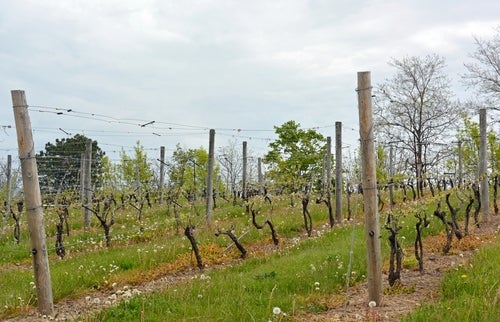
Representing terroir in a restrained fashion
It’s worth highlighting that most producers, when making their higher-end, single-vineyard wines will take a barrel selection. I sense the profile they are looking for has changed somewhat over recent years to focus on wine that represents the terroir in a restrained fashion. At Hidden Bench Estate Winery, Harald Thiel divides his estate so he is able to vinify every clone and age of vine within every parcel separately—60 separate vinifications.
We tasted two verticals of Hidden Bench—Beamsville Bench Chardonnay and Felseck Vineyard Chardonnay. After a year, the barrels of Felseck are racked and the best go back into oak and some stainless steel barrels for a second winter, while the balance join other de-classified barrels in the Beamsville Bench Chardonnay, effectively a village-level wine, in a cascade approach used by many producers to maintain the high quality of their single-vineyard wines.
Those familiar with the Peninsular will notice my examples are drawn from Beamsville Bench and Twenty-Mile Bench, together with Grimsby, which backs onto the escarpment and I include as an honorary bench. I also tasted verticals from Niagara-on-the-Lake, Lincoln Lakeshore, and Creek Shores, but Chardonnay from these appellations doesn’t have the mineral backbone of the limestone Bench wines or the same potential to evolve despite some skilful winemaking. A special mention to Morgan Juniper who joined 16 Mile Cellar in 2018 and Kelly Mason at Domaine Queylus for maximising the potential of their terroir.
Kelly has carefully modified Queylus Chardonnay Reserve using earlier picking and some stainless steel aging, so that 2020 will probably be at its best from 2026 to 2028. At 16 Mile Cellar, I particularly liked Civility Chardonnay 2021. Unusually 16 Mile Cellar makes late releases. Great idea and hopefully more estates will follow suit.
Let’s hop to Prince Edward County where the Chardonnay differs from that of Niagara Peninsular, as Colin Stanners explains, “We have a colder climate and make crisp flavorful wines at lower alcohol,” he says, adding “you can drink PEC wines young, but it’s pretty important we make wines which can age ten years plus.”
Colin makes some intriguing wine, including a 2022 Chardonnay which was fermented on skins for 21 days. The whole bunch-pressed and stainless steel-aged 2009 (Colin works with tiny quantities so uses a miniature basket press) was made with third-leaf fruit and is still vibrant and mineral, albeit not long on the finish. The super-intense 2020, which is still aging in stainless steel as Colin hasn’t got round to bottling it yet, had 12 hours skin contact resulting in a firm and attractive phenolic bite.
Tannic character from judicious skin contact seems popular in PEC, but is not something that’s caught on in Niagara. It’s a stylistic choice since Ontario Chardonnay is constructed round a core of acidity, so it’s not necessary for structure. Colin is rather out on a limb, but PEC’s granola lifestyle is a natural home to the more experimental approach. This former chemist knows what he’s doing and his wines are fascinating and age well, but many second-career winemakers miss the mark. PEC has a less mature wine trade than Niagara and there are not many ageworthy wines yet, but there is promise.
At Trail Estate, where 6.5 acres (2.6ha) was planted in 2012/13, Mackenzie Brisbois uses a soft whole bunch press and ten months barrel aging. The Chardonnay du Sud, from lighter soil on limestone and granite, is definitely Trail’s most distinctive wine. Part of producing ageworthy Chardonnay is identifying the parcels with the best potential. The north parcel is unremarkable, while recent vintages of Chardonnay du Sud have an aging potential of eight years with scope to extend.
Benchmarks
Norm Hardie of course makes benchmark County Chardonnay from vines which are now 20 years old. He also purchases fruit from Niagara. The Niagara Peninsular Chardonnay is typically a blend of Wismer Wingfield, Fox, and Cuesta. Norm was ahead of the curve in Ontario. From 2004 he was fully oxidizing the must, relying on indigenous yeast, using high-solids ferments and a low-sulfur regime, and bottling with total sulfur of 40-50 ppm. “I live and die by my sword, so I can make decisions especially about sulfur, which is more difficult if you are an employee,” he candidly admits.
I tasted through a vertical which mixed both County and Niagara wines, back to the hot 2012 vintage, which is quite oxidative now, and the 2013 and 2014 which are hanging on but some years past their peak.
However there is a significant change with the energetic 2015 Niagara Chardonnay, when Norm moved from 12 to 18 months élevage and shipped in more 500-liter barrels. Everything has slowed down here—in a good way—from the long, cold 15-16°C, high-solids fermentation that starts in horizontal milk tanks, which have a greater bourbes -to-juice ratio and are fitted with a chilling and stirring facility. “This extracts more foundation flavors,” says Norm. During fermentation Chardonnay is moved into 500-liter “light long toast” barrels at a density of 1070. This is standard practice, but Norm will move it later if necessary “to put the brakes on a warm vintage.” Recent vintages have the potential to evolve gracefully. The 2020 “Caillerets” from cold creek vineyard, just 1.5 km from the lake, will evolve over at least fifteen years.
Moving inland to Hiller, Keith Tyers at Closson Chase was bubbling with enthusiasm for the vertical flights of Chardonnay South Clos and Churchside he had prepared. Keith has also changed the winemaking since 2015 to be more oxidative at the press and use more bourbes, but there was another significant change in 2019. “I realised after a trip to Burgundy that I didn’t like my 2018s, a warm vintage, which I felt were too oaky. I need less oak in a warm vintage.” At 20%, the new oak was already low, but he moved to a lower toast and puncheons for the ripe 2020 vintage and changed from cork to screwcap, bypassing Diam.
“I am a wine geek,” says Keith. When Chardonnay ages you start seeing what interests me.” It was clear from the tasting that his changes in winemaking have extended the aging potential and accentuated the terroir differences of these two parcels. Churchside is straight and crisply saline while South Clos is a little fuller and richer with a soft salt finish.
This was my last visit after which I left for Toronto and home and as I headed back I reflected on the many tastings which showed that recent vintages of Ontario Chardonnay have greater depth and fruit intensity to balance the acidity, while staying true to the terroir. I think it’s fair to generalize that the aging capacity of Ontario Chardonnay has extended over the past five years or so from wine which peaked at the three-to-five-year mark, with many examples continuing to become nice mature wine. While more recent vintages promise to reach the moment where fruit and tertiary characters are in tandem around the five-to-seven-year mark. But, and this is significant, they show the potential to evolve over another five years and the best have a 15-year life span of real interest.
“Some wines don’t need to age, but we have the place to make good Chardonnay—the limestone and the microclimate with strong diurnals,” says Keith Tyers. “If you are patient and take time for long maturation the wine will have the structure to age.”
A salient point. In a world that demands immediate gratification, those who take time to make their wine are likely to make wine with the potential to age. And those who are prepared to bottle age that wine should reap the benefits of a more complex wine, not just an old wine, but something altogether more delicate and nuanced, as the layers are peeled back to expose the bones of the place where it was born. This is the hallmark of fine wine and with Chardonnay such as this, Ontario will claim its place among the fine wines of the world.


